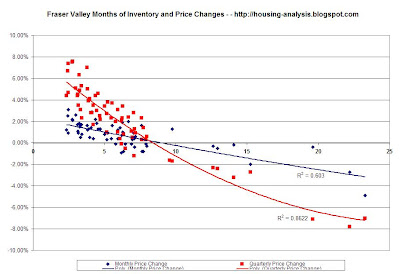link to spreadsheet (Note there is a bug with google spreadsheets; Click refresh if you get an annoying popup window and avoid dragging your mouse over the "anyone with the link" link. Should be fixed soon I hope.)
This is an actual real-life building in the GTA. We have the following inputs:
Purchase Price = $528,800
Closing Costs = $1,000
Deferred Maintenance (Renovations) = $0
Revenue
Rent = 5 units totaling $3725/month

 Expenses
ExpensesTaxes = $4759/yr
Insurance + Utilities* = $4974/yr
Property management** = 8% of revenue
Building maintenance = 10% of revenue
Vacancy allowance = 5% of revenue
TOTAL = $1668/month
* Rent includes utilities
** Property management fees can be a few % higher in Vancouver
Calculations
NOI = Revenue-Expenses = $2057
Cap rate = NOI/Purchase Price = 4.7%
GRM = Purchase Price/Revenue = 11.82 (price/monthly rent = 142)
Financing
Here the investor is putting 30% down and assuming a 5% mortgage interest rate. With these numbers the mortgage payments just cover the NOI and is cash flow neutral, which is the goal of this particular investor.
Discussion
Here we see the investor requires 30% down and 5% mortgage rate to make this property cash flow neutral. Also note the investor does not consider capital appreciation when determining the investment's value; it's all about the cash flow at what they consider to be a sustainable financing rate.
We can see right away the impact of lower mortgage rates on these investors' criteria for a cash flow positive property. They have no earnings, at least initially, save debt repayments. In time, the investor assumes, the rents will increase with inflation and start producing positive cash flow.
After some years there will be some added expenses as the building starts aging. This is partly, but not completely, accounted for in the 10% gross rent maintenance allowance. Significant overhauls may be necessary from time to time and this is accounted for through depreciation allowances, usually a few % of the purchase price on a geometric schedule. Though the spreadsheet does not explicitly cover this, one can expect in time some of the free cash flow to be diverted to capital replacement.
Also for consideration is the 5% assumed mortgage rate. Certainly in today's climate mortgage rates could easily stay at or below this level for some time. I have no doubt some investors are using even lower rates (even variable rates!) when calculating their monthly cash flow. Food for thought, though, that rates this low are borderline deflationary. It is unclear if the projected rental increases will be as large as anticipated if rates remain low.
With this in mind, there is a box at the bottom of the spreadsheet for calculating purchase price for a given cap rate. That is (at least in theory), an investment with revenues that generally track inflation should not vary their present value when inflation changes, therefore the cap rate will stay constant. What cap rate would be considered acceptable? Well the "acceptable" number used by this investor is 7% for that particular property, putting an acceptable purchase price in the area of $308,600. Food for thought.
So there you have it. A real-life example of a cursory analysis of a potential real estate investment. Certainly there is a ton more to consider when evaluating a particular property's investment viability but, following this investor's philosophy for what it's worth, having these numbers work on a particular property (at whatever values one considers acceptable) should warrant some additional investigation. Otherwise, it's probably best to spend one's efforts elsewhere.











